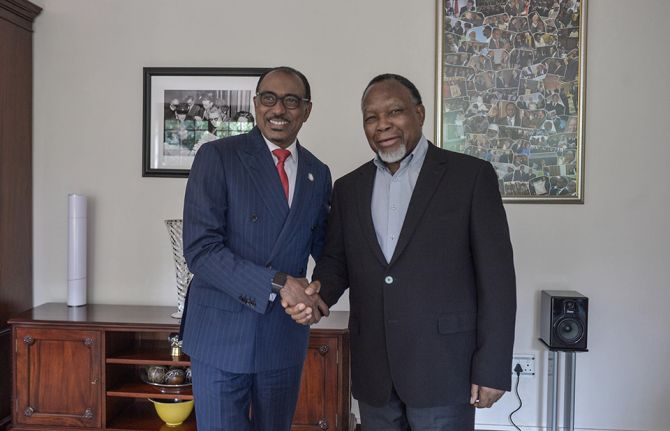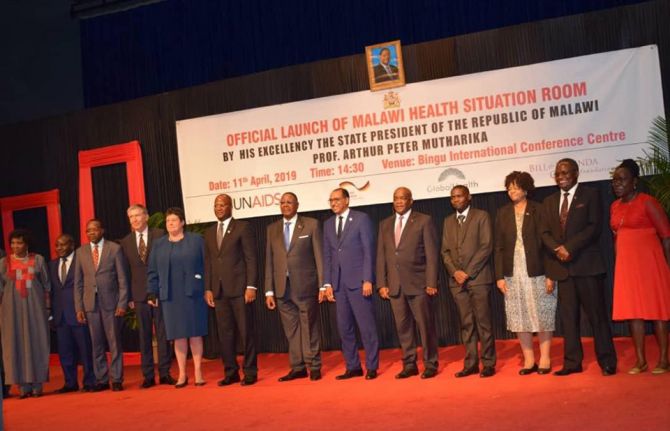
Feature Story
Getting to Zero new HIV infections: High Level Meeting panel outlines way forward
08 June 2011
08 June 2011 08 June 2011
Ms Mari-Josee Jacobs, Minister or Cooperation and Humanitarian Affairs, Luxemburg, Moderator Ms Kgomotso Matsunzane, Dr Jarbas Barbosa, Deputy Minister of Health of Brazil, Helen Clark, United Nations Development Programme, and Jaevion Nelson, youth activist from Jamaica.
Photo : Photo ONU/Eskinder Debebe
Global rates of new HIV infections have steadily declined over the past years, with the annual rate falling by nearly 25% between 2001 and 2009. But with 7 000 new HIV infections daily, the rate of people becoming newly infected still outpaces the capacity to extend treatment access and cope with the effects of HIV.
As part of the United Nations General Assembly High Level Meeting on AIDS, a panel entitled Prevention—what can be done to get to Zero new infections? chaired by Ms Mari-Josee Jacobs, Minister or Cooperation and Humanitarian Affairs, Luxemburg, brought together the Administrator of the United Nations Development Programme (UNDP), Helen Clark, Jaevion Nelson, youth activist from Jamaica, and Dr Jarbas Barbosa, Deputy Minister of Health of Brazil engaged with the audience in an inspired and interactive session on how to amplify and sustain the momentum of this HIV prevention revolution.
Setting the scene, Ms Jacobs opened with stressing the importance on involving people living with HIV in all aspects of HIV prevention programming: “It is important to engage people living with HIV—and especially young people living with HIV—in HIV prevention efforts to improve programmes with full respect for human rights to all.”
Moderated by South African TV personality Kgomotso Matsunzane, the discussion centred around key questions such as ‘What stands in the way of getting to zero new infections?’ and ‘How are rights integral to prevention?’
We need address the punitive laws that act as barriers to HIV prevention. The law can stand in the way or promote effective responses—we must create an enabling legal environment for HIV prevention.
Helen Clark, Administrator of the United Nations Development Programme
“With this High Level Meeting we have a unique opportunity,” said Dr Barbosa as he opened the panel discussion. “We cannot wait for another 30 years to eliminate HIV. We need a strong declaration from this High Level Meeting that represents the political commitment, and that moves the agenda forward.”
According to the most recent population-based surveys in low- and middle-income countries, only 24% of young women and 36% of young men responded correctly when asked five questions on HIV prevention as well as misconceptions about HIV transmission. And while global new HIV infections are decreasing, Eastern Europe and Central Asia is the only region in the world where new HIV infections are increasing.
In her opening address Ms Helen Clark, UNDP Administrator noted that there is a need to confront the social, sexual and gender norms that drive vulnerability to HIV.
“Legal frameworks need to accommodate effective responses to HIV. So often the law stands in the way of reducing risk and vulnerability, and of spreading access to treatment and prevention services. Where human rights are not upheld, genuine universal access to services is impossible,” said Ms Clarke.
Jaevion Nelson, youth activist from Jamaica, agreed: “Far too many programmes are failing because they are not based on the evidence that exists. We must all: as governments, as civil society and the international community do the right thing.”
HIV prevention investments only represent about 22% of all HIV spending in 106 low- and middle-income countries. Clearly much remains to be achieved to ensure that the vision of zero new HIV infections is reached.
In an impassioned intervention from the floor, Dr Nafsiah Mboy Executive Director of the Indonesian National AIDS Commission urged the panellists to remember to address a group who are commonly not considered most at risk, but indeed are—the ‘4 M’s’ as she called them—mobile men with money in a ‘macho’ environment. “Let us turn these men into responsible men. That way we will have zero new infections among our women and zero new infections among our children,” said Dr Mboy.
Far too many programmes are failing because they are not based on the evidence that exists. We must all as governments, as civil society and the international community to do the right thing.
Jaevion Nelson, the youth activist from Jamaica
It was also agreed in the discussion that rapid access to both future and existing HIV prevention tools—including male and female condoms, male circumcision, the elimination of vertical transmission and treatment for prevention—is needed. The last point inspired by the recent announcements of the HPTN 052 study which showed that if an HIV-positive person adheres to an effective antiretroviral therapy regimen, the risk of transmitting the virus to their uninfected sexual partner can be reduced by 96%.
UNAIDS strategy 2011 – 2015: Getting to Zero outlines the bold goals for 2015: 1) sexual transmission of HIV reduced by half, including among young people, men who have sex with men and transmission in the context of sex work; 2) Vertical transmission of HIV eliminated and AIDS-related maternal mortality reduced by half; and 3) all new HIV infections prevented among people who use drugs. This is part of UNAIDS vision to reach zero new HIV infections.
UN General Assembly High Level Meeting on AIDS
Thirty years into the AIDS epidemic, and 10 years since the landmark UN General Assembly Special Session on HIV/AIDS, the world has come together to review progress and chart the future course of the global AIDS response at the 2011 UN General Assembly High Level Meeting on AIDS from 8–10 June 2011 in New York. Member States are expected to adopt a new Declaration that will reaffirm current commitments and commit to actions to guide and sustain the global AIDS response.
External Links
External Links
Multimedia
Multimedia
Publications
Publications
Related
 Keeping up the momentum in the global AIDS response
Keeping up the momentum in the global AIDS response

24 April 2019
 Malawi launches its health situation room
Malawi launches its health situation room

12 April 2019
 Learning lessons on evaluation
Learning lessons on evaluation

02 April 2019
